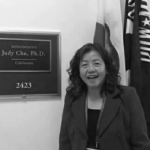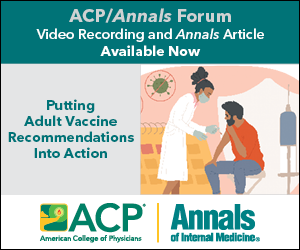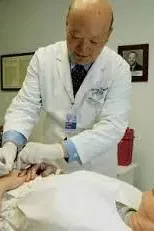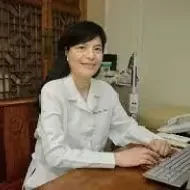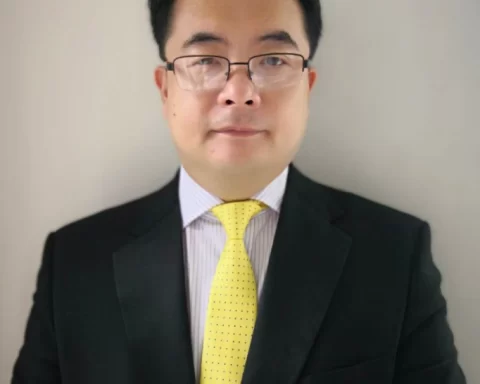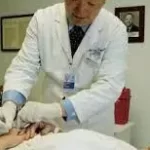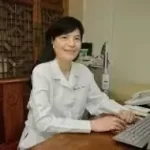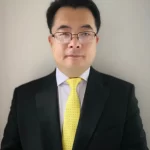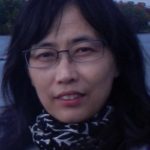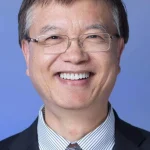Bing Yang
Introduction
Acupuncture has been practiced in the United States since the 1970s, and in that time many scholars and practitioners have devoted themselves to the evolution and advancement of both the quality and status of acupuncture and Chinese herbal medicine in the US. Dr. Xiaoming Tian, a world-renowned senior acupuncturist, has greatly contributed to these efforts.He is currently the Director of the Academy of Acupuncture and Chinese Medicine and his clinic the Wildwood Acupuncture Center in Bethesda, Maryland. While I have known Dr Tian personally for many years, this was the first time I had talked with him about his own experiences in clinical practice and public service.Besides a busy clinical practice, he has also actively advocated for the use of acupuncture and Chinese herbal medicine. He has received many awards for his contributions in the United States and Worldwide, from organizations including the National Institutes of Health, the US Senate, and the American Association of Acupuncture and Oriental Medicine.
For many years Dr. Tian served as the vice president of the World Federation of Chinese Medicine Societies. He was an advisor on Traditional Chinese Medicine for the World Health Organization, and the Pan American Health Organization from 1986 to 1989. From 1991 to 2005 he was a clinical consultant and developed the first acupuncture clinic at the NIH Clinical Center. He served as a member of the White House Commission on Complementary and Alternative Medicine Policy (WHCCAMP) in 2001 to 2002, and most recently in 2008 to 2013 he was a member of the National Advisory Council for Complementary and Alternative Medicine.His other interests include research into clinical applications of acupuncture for Fibromyalgia through a grant from the NIH. He has also developed several new supplements to help treat and prevent osteoarthritis, osteoporosis, and manage sports injuries.
Dr. Tian obtained his medical degree from Beijing Medical University where he became interested in acupuncture and Chinese herbal medicine. He went on to complete a postdoctoral fellowship in bone pathology at Johns Hopkins University, and worked on biochemistry and the ultrastructure of bone at the National Institute on Aging and the National Institute of Dental and Craniofacial Research from 1982 to 1986.
In 1986 he established the Wildwood Acupuncture center in Bethesda Maryland. and over the years he and his team have treated more than 30,000 patients in the Greater Washington DC area. In 1996, he established the Academy of Acupuncture & Chinese Medicine to do research on herbal medicine and dietary supplements.
Interview content
In an interview in April of 2018, I asked him about his public service and his clinical success. Additionally, since he has observed the historical development of acupuncture and Chinese herbal medicine in the U.S. I asked him to share his thoughts on the present and future of the development of acupuncture and Chinese herbal medicine.
As a practitioner, I was curious about the way he managed his clinic and what made it so successful. When asked what the most important characteristic an acupuncturist should have, Dr. Tian said he believes that the practitioner’s strong intention to care for patients is the most valuable factor, followed by good skills and techniques. He said “There are so many difficult diseases that we can’t deal with. However, if the practitioner is trying his best to help the patients, they can feel and appreciate that.
He also provided some details about the management of the clinic, saying that the practitioner should be always available to the patients. The availability includes being able to see the patients as soon as possible, and returning phone calls in a timely way. It is also important to make helpful suggestions and refer the patients to other doctors as necessary.
Secondly, the clinical effects must be satisfactory. Most times Chinese medicine doctors are the practitioners of last resort, the patients having already been to other western doctors before they come to see a Chinese medicine practitioner. Their conditions tend to be complex and challenging, which puts a high demand on Chinese medical practitioners. One needs to feel confident in Chinese medicine to treat the patients in accordance with Chinese medical principles and rules. According to Dr. Tian, he and his team have treated 250,000 to 280,000 patients in the past 32 years. These were often difficult cases which western medicine had not helped.
Third, as successful practitioners, they must get along well with doctors and other practitioners. Chinese medicine and western medicine are very different but often complementary systems, like the left and right hands. Sometimes these two, working together, can yield better results. Over the last three years(2016-2018), roughly 70% of his referrals were from western doctors and other CAM practitioners. His clinic has a good reputation and maintains a healthy relationship with other hospitals and clinics.
We also discussed his experiences in the last 32 years in clinical practice and public service for the NIH and White House, along with recent historical milestones for acupuncture and Chinese herbal medicine. As a pioneer in this field, his experiences are unique, having contributed to and observed the gradual acceptance of acupuncture and Chinese herbal medicine in the U.S.
His biggest challenge was legislation around Chinese medicine in the early 1980s. At that time, the validity of Chinese medicine was not recognized, and its effects were generally regarded as a placebo. The director of the NIH said they would not support Chinese medicine. In response to this Dr. Tian established his clinic in 1986, in hopes of providing treatment for patients who had not had results with western medicine. After having successfully treated a White House consultant with severe sciatica pain, along with many other difficult cases, the NIH eventually accepted acupuncture, and brought it into their clinical center in 1991. This was significant as it was the first time that the NIH ever had an alternative medical system practiced in their clinical center. “I was appointed head of the clinic and worked there for 16 years, treating a large number of patients, many of whom worked in the White House or congress. It was this patient base that finally made the legislation around acupuncture and Chinese medicine possible, since they were shocked to see how beneficial it was. “
Following that milestone, in 1998, the National Center of Complementary and Alternative Medicine was founded. Then, in 2002 the White House Commission on Complementary and Alternative Medicine Policy published their final report, and inside, the term “Traditional Chinese Medicine” first appeared in a White House document. It was regarded as a breakthrough for the development of acupuncture and Chinese herbal medicine, since it acknowledges Chinese medicine as a medical system, which includes acupuncture, herbal medicine, tuina, and other therapies. The report was approved by the FDA, NIH, White House and Congress. To this day, this report is still recognized as a guideline for the development of complementary and alternative medicine, and healthcare reform. His own educational background as a doctor of both western and Chinese medicine allowed him to get along with both Western doctors, as well as other CAM practitioners. In his mind, all medicine, regardless of its source, belongs to humankind and should work towards the same goal, the improvement of human health and wellbeing. When he realized that it was of great significance to make the NIH acknowledge and approve the safety and effectiveness of acupuncture, he worked even harder to push it forward and get legislation established. As he said, “It is not easy and will take time, but we have to push forward, little by little, and we will get there. ” He spent over 30 years helping in the legislation process and promoting the acceptance of Chinese medicine, and he feels this was his biggest contribution, saying “This was also a process of learning how mainstream Americans think, and what we can do to push the Chinese medicine profession forward.” Being the first to lead the acupuncture clinic at the NIH clinical center, and as a member in the White House Commission on Complementary and Alternative Medicine Policy, he contributed to the legislation and acknowledgement of acupuncture and Chinese medicine. “I did what I could and felt satisfied with my work. ” He certainly should be proud of his work. According to a national survey in 2008 sponsored by National Center for Complementary and Alternative Medicine, nearly 38% of Americans had experienced CAM treatments, and over 3,700,000 Americans had utilized acupuncture or Chinese medicine (Barnes, Bloom & Nahin, 2008). Since then the utilization of acupuncture has increased, prompting interest in the funding of biomedical research into acupuncture. (Austin, Ramamonjiarivelo, Qu and Griffith, 2015)
My last question was regarding the status and the future of acupuncture and Chinese medicine in the U.S. healthcare system. Dr. Tian was very optimistic, saying that “Acupuncture and Chinese medicine will develop faster and faster as more patients benefit from it. ” This is very true. Patients increasingly seek alternative and complementary therapies for the difficult diseases. The side effects of pharmaceutical drugs are often substantial, and rising healthcare costs are a heavy burden. The relatively low cost and few side effects of Chinese medicine make it a good fit for the American healthcare system.
Author information:
Bing Yang is an acupuncturist in Massachusetts. She received her bachelors and Master’s degrees in Acupuncture and Chinese Medicine from Beijing University of Chinese Medicine in the 1990s and her Doctoral degree from Massachusetts College of Pharmacy and Health Sciences (MCPHS). Currently she is the associate professor and Director of Chinese Herbal Programs of New England School of Acupuncture, MCPHS. She also maintains a private practice in Boston.
田小明醫生訪談
作者:杨冰
人物簡介
針灸在中國有四千年的歷史,只是在七十年代開始才進入美國。在過去的四十年中,很多學者和醫生都為針灸在美國的穩定發展做出了卓越的貢獻。田小明醫生就是其中一位做出傑出貢獻的專家,目前在馬里蘭州行醫。在繁忙的診務之餘,他致力於服務大眾,提高針灸和中醫在美國的知名度。因為他對美國和世界針灸界的傑出貢獻,他得到了很多褒獎和認可,尤其是美國國家衛生研究院(NIH),美國參議院和美國針灸中醫協會。
從2003 年起,田醫生任職世界中醫聯合會副主席(已退)。在1986-1989年他是世界衛生組織和泛美衛生組織的中醫顧問。在1991-2005年他建立了NIH的第一個針灸診所,並任職負責人和顧問。他獲得的其他的一些獎項包括總統獎,白宮替代醫學政策委員會委員(2001-2002年)。他最近的公眾服務角色是美國國家補充替代醫學委員會成員 (2008-2013年)。此外,田醫生致力於纖維組織痛的針灸科研(NIH經費資助),並研發了很多預防和治療骨性關節炎、骨質疏鬆症和運動損傷的中藥和食品補充劑。
田醫生於北京醫科大學取得醫學學位, 和很多其他著名的醫生一樣,他很早就對針灸和中醫產生極大的興趣。他在約翰霍普金斯大學完成骨科病理學的博士後研究,並在國立牙科和顱腦研究所完成生化科學的研究(1982-1986年)。
在1986年他在馬里蘭州建立了野木針灸中心,這些年在華盛頓特區附近治療了二十多萬人次。1996年他成立了針灸中醫研究中心,開始研發中藥和食品補充劑。
訪談內容
在2018年4月3日,筆者訪談了田小明醫生,請他就臨床醫療和公眾服務方面分享一些體會,希望他的經驗能夠照亮未來針灸師的道路。並且因為他是致力於針灸和中醫在美國發展的前輩,我希望他能夠對針灸和中醫在美國的過去、現在和未來提出自己的看法。
我很好奇他是怎樣使自己的診所做的如此成功。我的第一個問題是:“作為一個執照針灸中醫師,您覺得診所成功最重要的因素是什麼?”。田醫生回答說:最重要的因素是要對患者盡心盡力,其次是技能和技術。有很多的疾病我們無法治愈,如果我們盡力幫助患者,他們會感受得到。
對於診所日常管理他提出瞭如下建議:首先,針灸師要有充分的時間診治患者。這包括能夠很快接治患者,及時回復電話,提供有效的建議,並且在需要的時候及時轉診病人。其次,也是最重要的,臨床療效必須要令患者滿意。在很多時候,中醫師是患者的“最後希望”,患者基本都已經看過其他的西醫醫生,他們的症狀都非常複雜且具有挑戰性,因此對中醫師提出了非常高的要求。中醫師需要對中醫有信心,按照中醫的治療方法和原則去診治患者。田教授和他的團隊在過去的32年間,診治患者將近250,000-280,000人次,其中很多都是西醫無法治療的疑難雜症。
再次,作為成功的中醫師,他/她一定要和其他的西醫醫生和替代醫療的醫生保持良好的合作關係。中醫和西醫是兩種完全不同的系統,就像左手和右手。很多時候二者的結合能夠取得非常好的臨床療效。比如說,在過去三年間(2016-2018年),他的診所接受了1027 次轉診,其中669次是由其他的西醫和替代療法的醫生做出的。在當地他的診所享有很高的聲譽,和其他的很多醫院和診所都保持著良好的合作關係。我的第二個問題是:“在過去32年間的臨床和為NIH以及白宮做公眾服務中當中,遇到的最艱難的挑戰和機會是什麼?以及在針灸和中醫發展過程中有哪些歷史性時刻?”作為這個領域的先驅者,他的經歷非常獨特,一直致力於推進針灸和中醫在美國主流社會的承認和推廣。儘管這個話題非常泛泛,田醫生還是提供了很細緻的回答。
他最大的挑戰是八十年代中醫在美國的立法。在那時,美國主流社會不承認中醫,認為針灸只是安慰劑效應。 NIH的主任認為他們不應該支持針灸和中醫。實際上,這也是田醫生在1986年成立診所的原因,希望能夠為很多西醫無法治療的患者提供有效的治療方式。在成功治療白宮一位官員的坐骨神經痛和其他一些疑難雜症之後,他的卓越療效最終使NIH於1991年在NIH內部診療中心成立了第一個針灸診所,這被認為是美國針灸和中醫發展的一個里程碑,因為在此之前,NIH從沒有允許其他的外國醫療系統進入NIH內部。 田醫生說到:“我被任命為診所的負責人,在那里工作了16年,診治了大量的病人,很多是白宮和國會的官員和工作人員。是這些龐大的患者人群最終使得針灸和中醫的立法成為可能,因為他們被非凡的療效震驚了。”
在1998年,美國國立補充替代醫學中心成立。緊接著,在 2002年,白宮補充替代醫學政策委員會發表了他們最終的報告。在報告裡“中醫”第一次出現在白宮的文件中,這被認為是針灸和中醫在美國發展歷程中的突破,因為此報告承認中醫是一個醫療系統,包含針灸,中藥,推拿以及其他療法。報告被FDA、 NIH、白宮和國會承認並通過。直到今天,這份報告仍被認為是補充替代醫學的發展和美國醫療改革的指導準則。關於針灸和中醫發展的好機會,田醫生回憶說:“使命和挑戰同時存在。我花費了30年的時間推動立法的進程,我認為這是他最大的歷史使命,這也是一個學習的過程,了解美國主流社會對針灸中醫的看法,以及為了推動中醫事業的發展我們能夠做些什麼。”作為第一位在NIH內部針灸診所的負責人,以及白宮補充替代醫學政策委員會的成員,他為針灸和中醫的立法以及被主流社會所接受做出了自己的貢獻。 “我做了自己能做的,並對自己的工作感到滿意”他說。他應該為自己感到驕傲。根據2008年的統計調查,有38%的美國病人曾經接受補充替代醫學的治療,多達3,700,000美國人曾經使用過針灸和中藥。(Barnes, Bloom& Nahin, 2008) 隨著時間流逝,越來越多的美國人使用針灸,而且有越來越多的科研機構開始資助針灸的科研。 (Austin, Ramamonjiarivelo, Qu and Griffith, 2015)
對於我的最後一個問題,針灸和中醫在美國衛生健康系統中的地位以及未來的發展。田醫生非常樂觀地说:“針灸和中醫會發展的越來越快越來越好,會造福於廣大患者”。事實確實如此,患者需要求助於補充替代療法來治療疑難疾病,而西藥有很多無法克服的副作用,日益高漲的醫療費用也是一個沉重的負擔。相對的低成本和低副作用使得補充替代醫學滿足了美國社會的需要。
作者簡介:
楊冰,中醫師 九十年代畢業於北京中醫藥大學, 獲中醫學學士、碩士學位,後於美國麻省藥科與健康科學大學獲博士學位。現為麻省藥科與健康科學大學新英格蘭中醫學院教授,中醫系主任,並在波士頓行醫。


